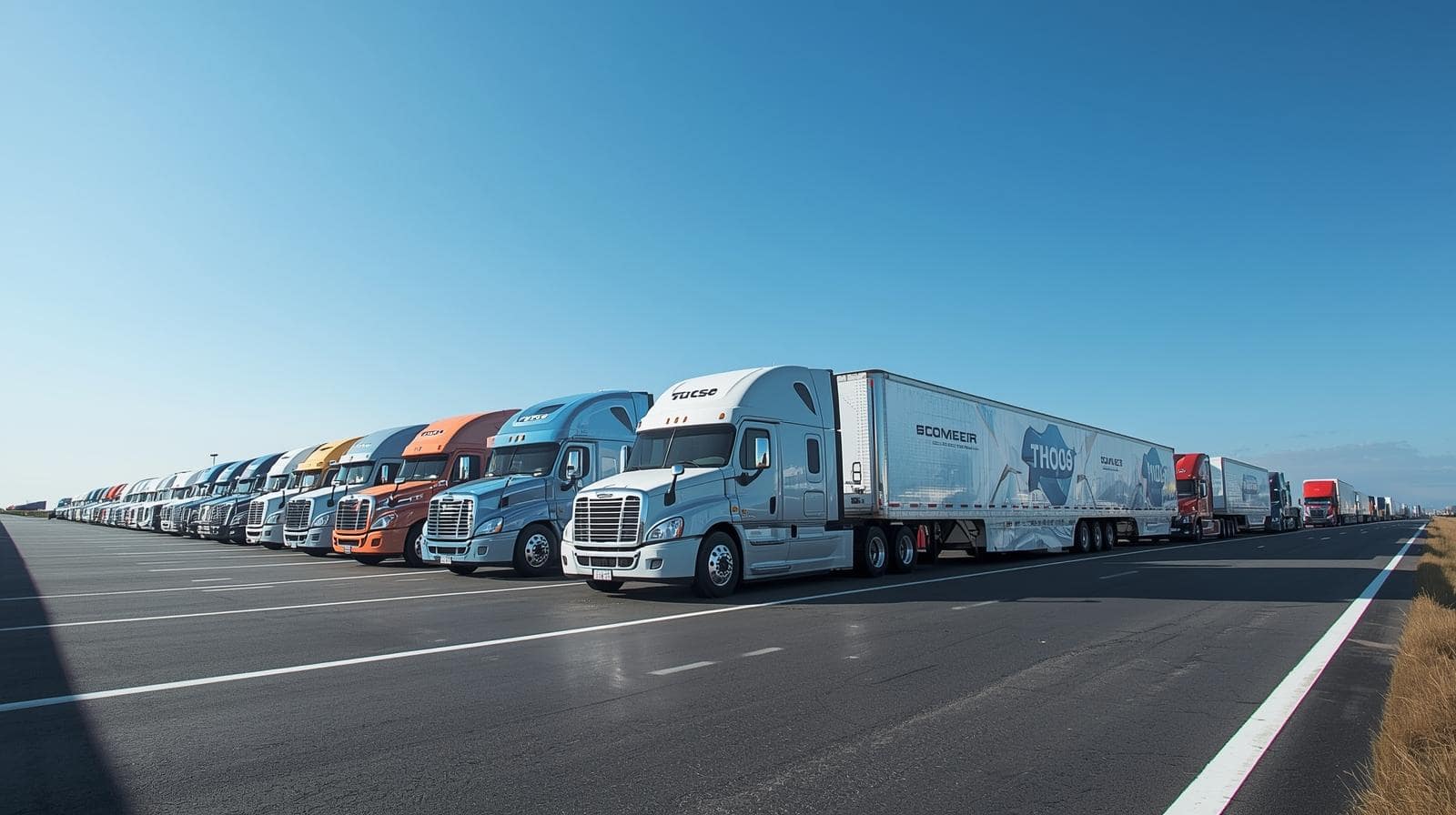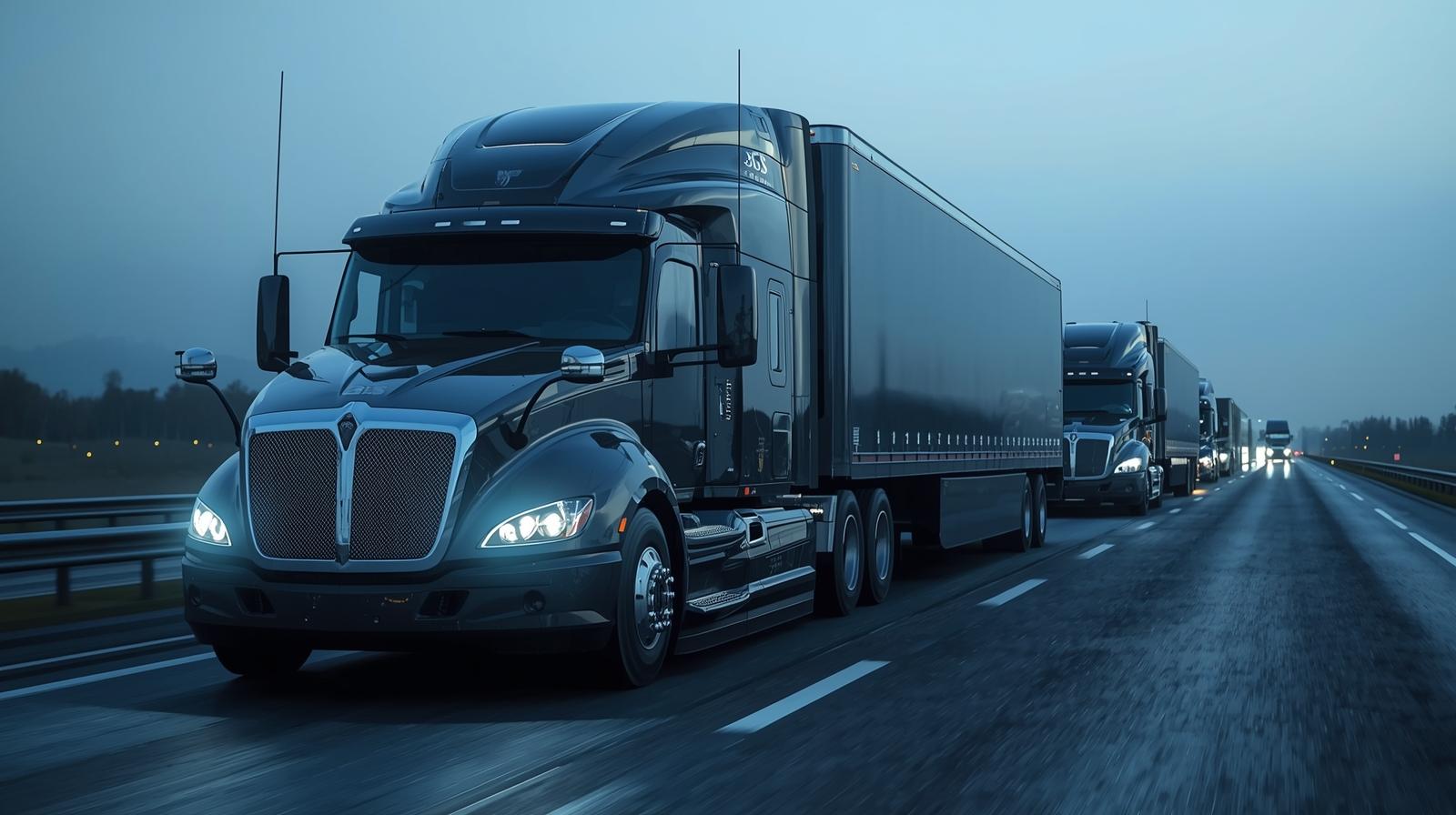Contents
Fleet management in 2026 revolves around foresight — not reaction. Predictive AI has become the new fuel for profitability, driving decisions that keep fleets lean, efficient, and consistently ahead of breakdowns, delays, and waste. The fleets that thrive are those that can see a problem coming and fix it before it hits the balance sheet.
Predictive artificial intelligence transforms how fleet operators use their data. It doesn’t just record past trips or analyze monthly patterns — it forecasts the next issue, the next maintenance need, or the next surge in fuel consumption before it occurs. That’s what makes it powerful. The system constantly learns from telematics, engine diagnostics, driver behavior, and route conditions to identify where money leaks out of operations. Then it plugs those leaks automatically, without waiting for a call to the maintenance bay.
AI That Thinks Like a Fleet Manager
AI systems work like veteran dispatchers who never rest. They read streams of data from every truck, including location, RPM, tire pressure, idle time, and weather, and turn it into practical, predictive insights. The software recognizes early drops in fuel efficiency or subtle signs that brakes need service soon. Managers can schedule maintenance before failure happens, avoiding expensive roadside repairs and delivery delays.
Predictive AI also uncovers hidden inefficiencies in driving behavior. It identifies excessive idling, sudden braking, or poor route choices. Correcting these habits can lower fuel consumption by 10 to 15 percent, a direct gain in profit for fleets operating on tight margins.
AI-powered routing multiplies those savings. The system doesn’t just find shorter paths; it chooses routes that save time and fuel by factoring in live traffic, road conditions, and vehicle performance. Every optimized trip increases efficiency, and every saved mile turns into tangible profit by the end of the year.
Maintenance That Pays for Itself
Preventive maintenance has evolved into predictive maintenance — a model driven by machine learning instead of mileage intervals. The system monitors equipment wear in real time and predicts exactly when each component will need replacement. That means fewer breakdowns, fewer roadside repairs, and better resource allocation.
For example, a predictive AI might recognize a pattern of rising engine vibration that indicates injector wear. Instead of waiting for failure, the platform notifies maintenance ahead of time, allowing technicians to replace the part during routine service. The truck avoids downtime, the repair cost drops, and the load stays on schedule.
Studies across large U.S. fleets show that predictive maintenance reduces unscheduled repairs by up to 30%. The savings don’t just come from parts and labor — they come from avoiding delays, missed deliveries, and frustrated drivers.
Turning Data into Dollars
Every truck generates gigabytes of data daily, but without intelligent interpretation, it’s just noise. Predictive AI converts that noise into money-saving insight. It correlates driver habits, environmental conditions, and mechanical data to calculate true cost per mile in real time. Fleet owners finally see which routes, drivers, or equipment produce profit and which drain it.
With these insights, managers can make adjustments immediately — shifting underperforming vehicles off long-haul routes or optimizing driver assignments to match fuel-efficient habits. Decisions that once took weeks now happen in minutes, backed by data rather than gut feeling.
This speed and precision make predictive analytics a financial advantage. It doesn’t just cut costs — it sharpens decision-making and maximizes every asset’s output.
Safer Roads, Smarter Fleets
Predictive AI isn’t just about profit; it’s about protection. Systems now evaluate risk factors like driver fatigue, braking behavior, and speed consistency. When risk patterns appear, alerts are sent instantly to both driver and manager. This dual-awareness model has already reduced accident rates in early-adopting fleets by over 20%.
Safer driving also means lower insurance premiums and fewer claim disputes. For many carriers, AI-powered safety analytics have become the difference between profit and loss in a volatile freight market.
Scalability and the Future of Profit
Predictive AI scales effortlessly. Whether a fleet runs ten trucks or ten thousand, the system adjusts in real time without additional infrastructure. Cloud-based integration allows fleets to connect all assets under one platform, ensuring the same predictive precision across the entire network.
By 2026, profitability isn’t about cutting corners — it’s about cutting uncertainty. Fleets that rely on predictive AI operate with precision that manual management simply can’t match. They don’t guess; they know. They don’t react; they anticipate.
The difference between surviving and thriving in 2026 logistics will come down to who can turn prediction into profit — and who still waits for problems to show up before fixing them.
FAQ
1. How does predictive AI reduce fleet costs?
It analyzes telematics, maintenance, and driver data in real time to forecast issues and inefficiencies. By fixing problems before they escalate, fleets spend less on repairs, fuel, and downtime.
2. Can predictive AI work with older fleet vehicles?
Yes. AI platforms integrate with both modern and legacy telematics systems. As long as the vehicle transmits data, predictive models can process it and provide accurate forecasts.
3. Does predictive AI require constant internet connectivity?
No. Systems store data locally and sync automatically when a stable connection returns. Real-time monitoring continues without disruption.
4. What’s the average ROI from predictive fleet AI?
Fleets typically see ROI within the first 6–12 months due to reduced maintenance costs, improved fuel efficiency, and higher uptime. Larger fleets often experience even faster returns.
5. How does predictive AI improve driver performance?
It identifies risky or inefficient driving patterns and provides coaching suggestions through dashboards or mobile alerts. Drivers improve their habits, leading to safer and more efficient operations.
6. Is predictive AI hard to implement?
No. Cloud-based systems integrate with existing fleet management software, requiring minimal setup. Most fleets transition within days without disrupting daily operations.
7. What’s next for AI in fleet management?
AI will expand from predictive analytics into prescriptive automation — systems that not only detect issues but also take direct action, adjusting routes, performance, or maintenance schedules in real time.










